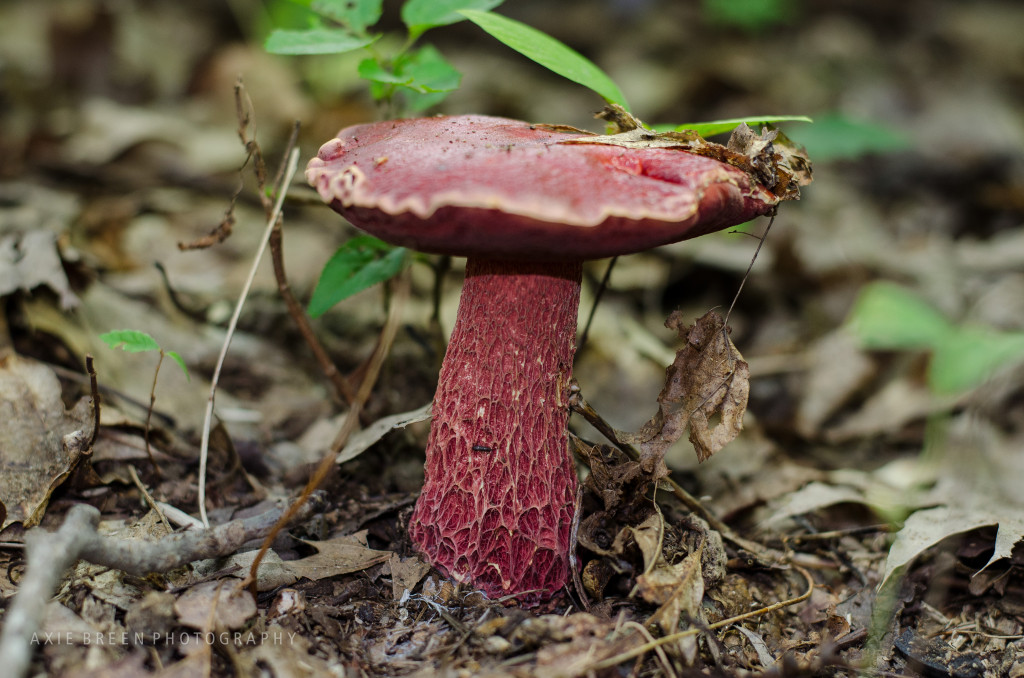 A very distinctive mushroom because the whole thing is dark red, it’s pretty big, and it has this internal-organ looking stem. In Mexico, the common name is panza agria, meaning “sour belly”.
A very distinctive mushroom because the whole thing is dark red, it’s pretty big, and it has this internal-organ looking stem. In Mexico, the common name is panza agria, meaning “sour belly”.
Frost’s Bolete, Apple Bolete (Exsudoporus frostii)

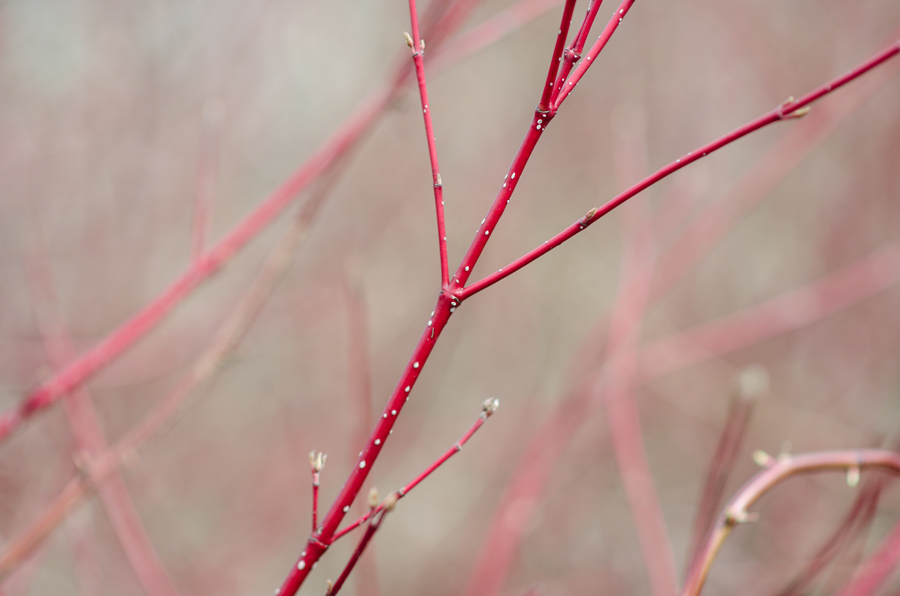 In the gray and brown landscape of early spring, it’s heartening to see these clouds of red stems. They like wetlands, and these are in the wetland border along the Charles. The bark responds to the increased light of spring by becoming brighter red. Native people used it for all kinds of things, like making dye from the inner bark and brushing teeth with peeled twigs. Native throughout northern and western North America.
In the gray and brown landscape of early spring, it’s heartening to see these clouds of red stems. They like wetlands, and these are in the wetland border along the Charles. The bark responds to the increased light of spring by becoming brighter red. Native people used it for all kinds of things, like making dye from the inner bark and brushing teeth with peeled twigs. Native throughout northern and western North America.
Red-osier dogwood, red-twig dogwood (Cornus sericea)
The only actual wildflower I’ve seen blooming is the skunk cabbage, but there are other signs of spring. The herons are back on their nest. And this robin had a bit of a bath! It looked so happy, dunking itself and flittering its wings. A blue jay shouldered its way in and this little one hopped out, but as soon as the jay had its drink and left, the robin popped back in.
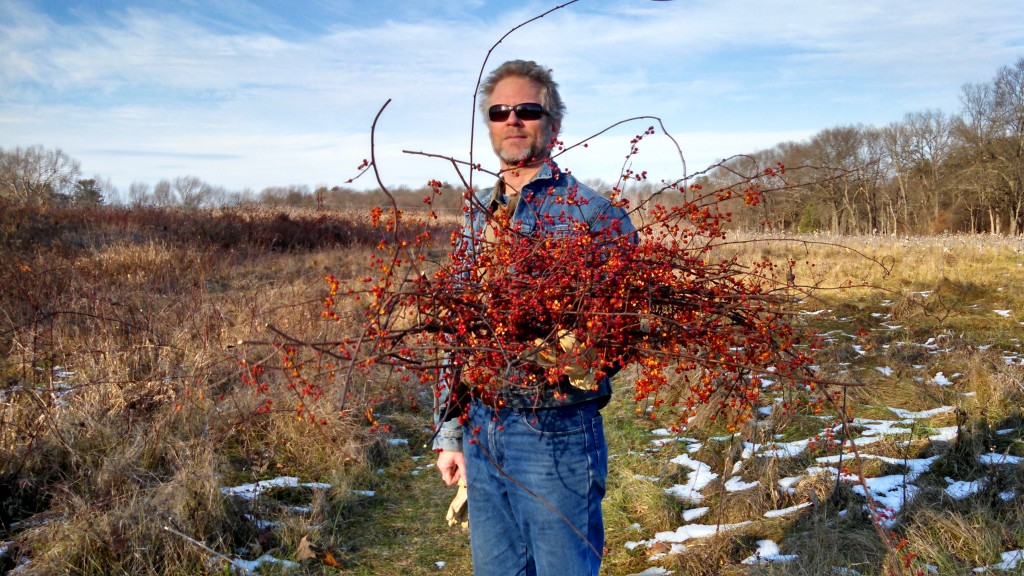 We’re having a blizzard, so I’m reminiscing for a moment about wildflowers and photos I meant to post. Here’s one from November– the annual ritual of collecting bittersweet for a wreath. Bittersweet is a woody ornamental vine native to Asia, but since arriving in the US around 1860 (and in Massachusetts by 1919), it’s been invasive and destructive. Has yellow flowers and brilliant orange berries. Most important factor in seed dispersal: frugivorous birds. (Cool new word!)
We’re having a blizzard, so I’m reminiscing for a moment about wildflowers and photos I meant to post. Here’s one from November– the annual ritual of collecting bittersweet for a wreath. Bittersweet is a woody ornamental vine native to Asia, but since arriving in the US around 1860 (and in Massachusetts by 1919), it’s been invasive and destructive. Has yellow flowers and brilliant orange berries. Most important factor in seed dispersal: frugivorous birds. (Cool new word!)
Oriental Bittersweet (Celastrus orbiculatus)
 In the spring, white flowers. In the fall, red berries. (The berries can have a laxative effect. Also, apparently native people made a tea of the leaves for use as a cough medicine and a contraceptive!) Ruscus family. Native.
In the spring, white flowers. In the fall, red berries. (The berries can have a laxative effect. Also, apparently native people made a tea of the leaves for use as a cough medicine and a contraceptive!) Ruscus family. Native.
False Solomon’s Seal, Treacleberry, Solomon’s plume, False Spikenard (Maianthemum racemosum)
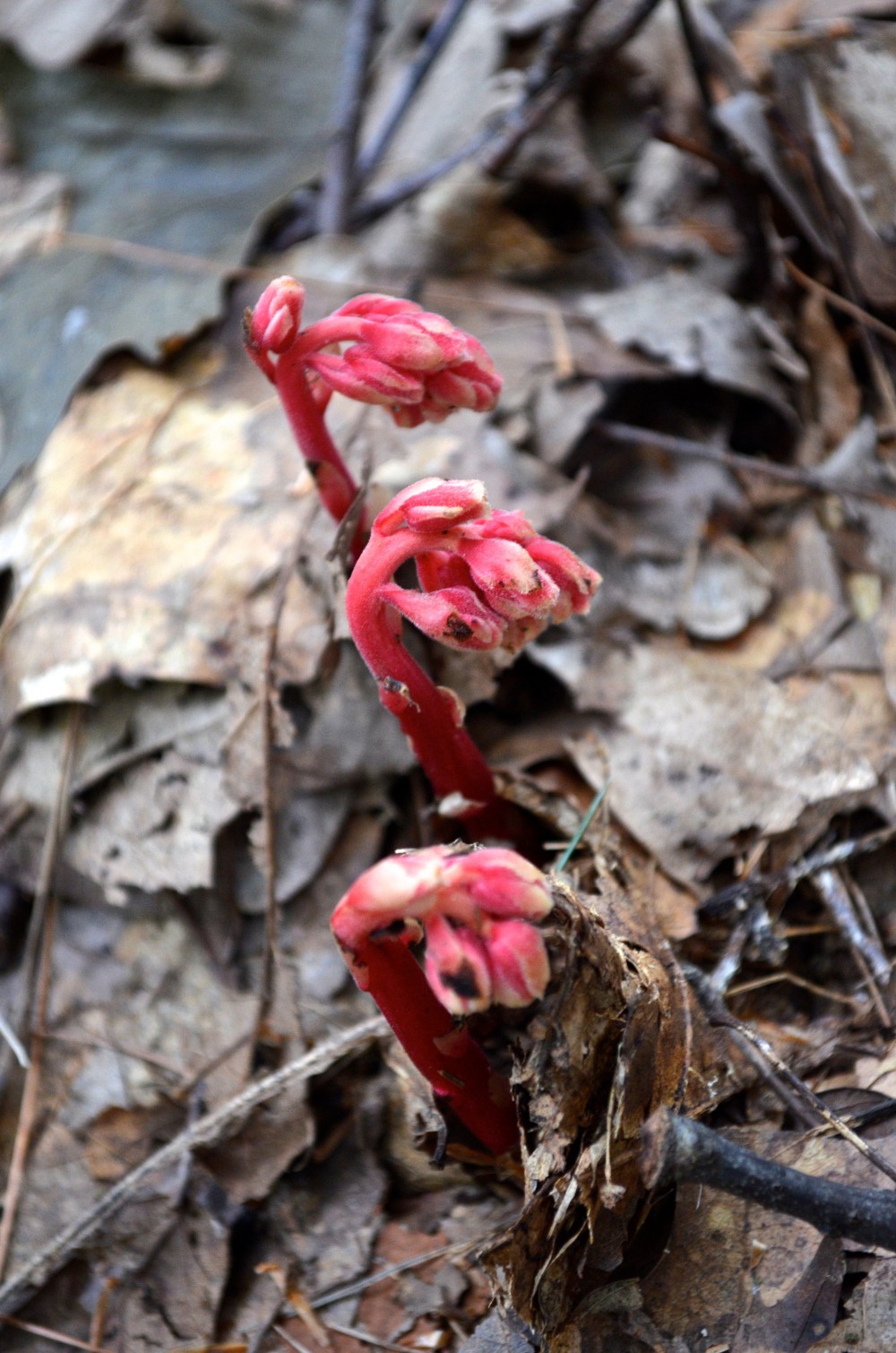
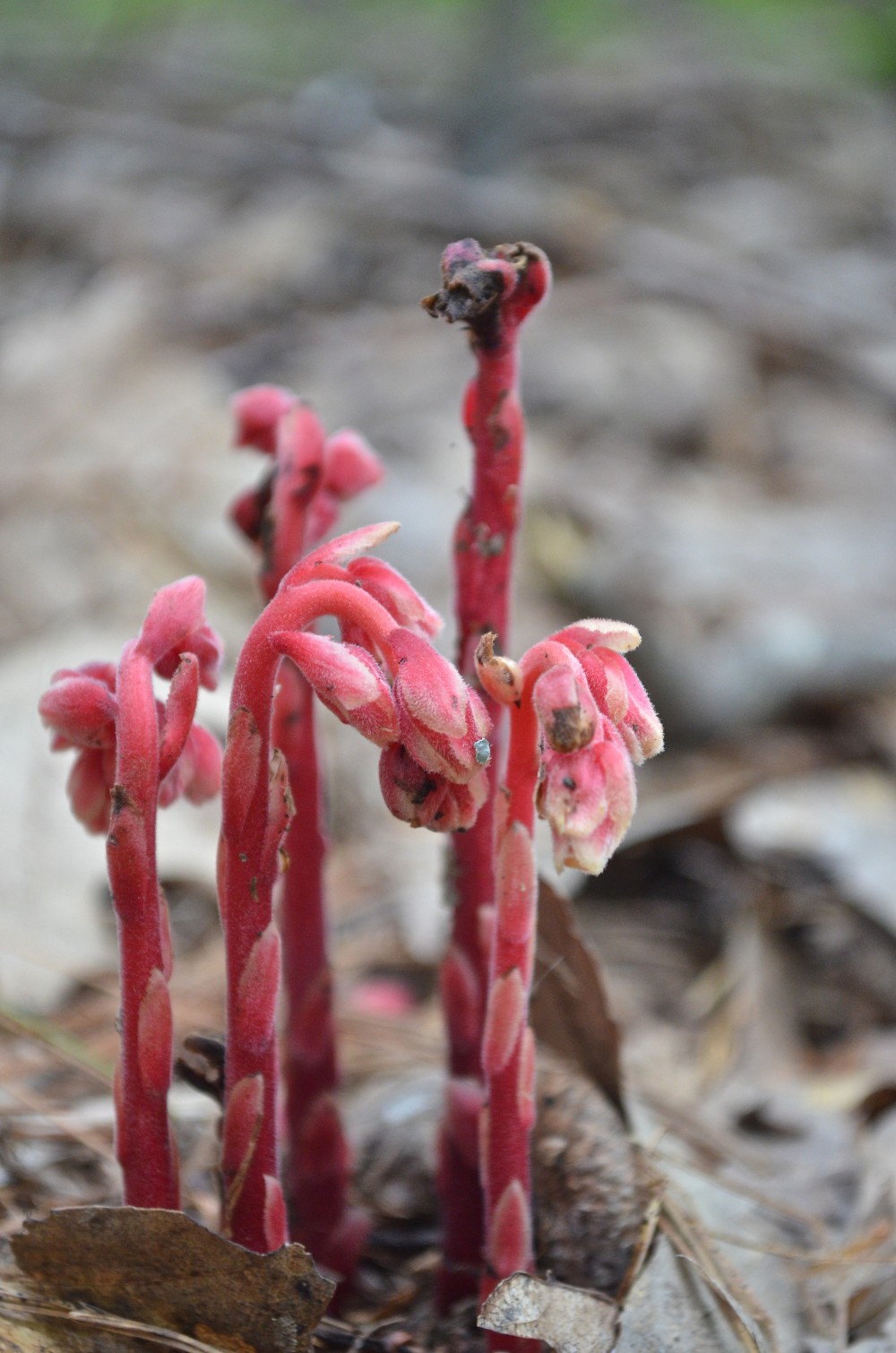 The most exciting new wildflower discovery in a long time! A bit of shocking pink among the September leaf litter. Kudos to AF Brian for spotting it first. It’s very like Indian Pipe, but this wonderful color, and it’s rare. It’s a mycotrophic flower — it has no chlorophyll and gets its nutrition from host green plants like a fungus. But instead of being a direct parasite on the host roots, it taps into an intermediary fungus on the roots of the host. Unlike a fungus, it does flower and bear seeds. Can be 12 inches high! Native. Pyrola family.
The most exciting new wildflower discovery in a long time! A bit of shocking pink among the September leaf litter. Kudos to AF Brian for spotting it first. It’s very like Indian Pipe, but this wonderful color, and it’s rare. It’s a mycotrophic flower — it has no chlorophyll and gets its nutrition from host green plants like a fungus. But instead of being a direct parasite on the host roots, it taps into an intermediary fungus on the roots of the host. Unlike a fungus, it does flower and bear seeds. Can be 12 inches high! Native. Pyrola family.
Pinesap, Dutchman’s Pipe, False Beechdrops (Monotropa hypopithys)
 As we roll into the end of summer, flowers are turning to fruits and seed pods are popping. Those charming jacks in their pulpits transform into fat (poisonous!) red fruit clusters (which are eaten by some birds). Each berry has 1 to 5 seeds. Next spring, with luck, they’ll each produce a plant, which will need at least 3 years of growing before it’s big enough to flower. They can live to be 100 years old! Native.
As we roll into the end of summer, flowers are turning to fruits and seed pods are popping. Those charming jacks in their pulpits transform into fat (poisonous!) red fruit clusters (which are eaten by some birds). Each berry has 1 to 5 seeds. Next spring, with luck, they’ll each produce a plant, which will need at least 3 years of growing before it’s big enough to flower. They can live to be 100 years old! Native.
Jack-in-the-Pulpit, Bog Onion, Brown Dragon, Indian Turnip (Arisaema triphyllum)
Below: the scene in spring…
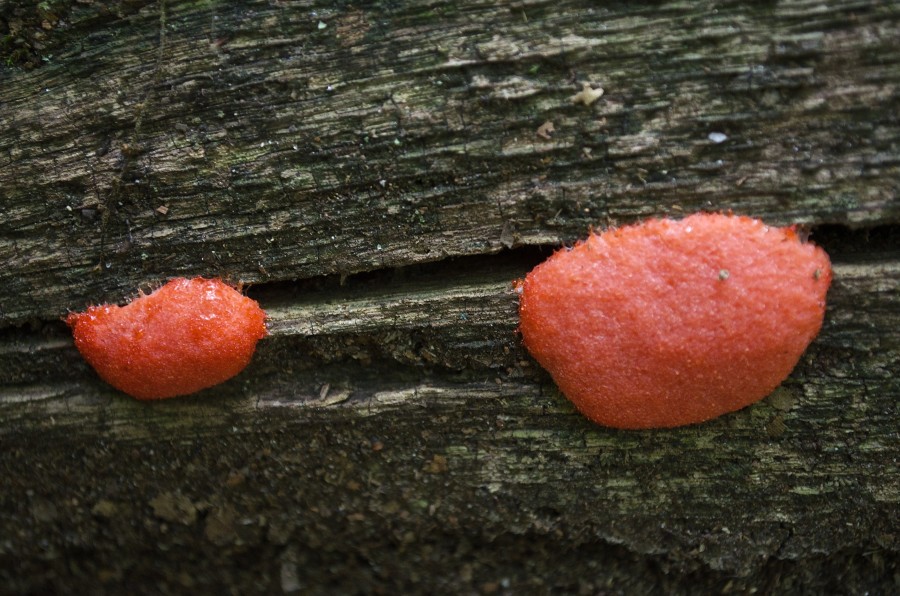 I saw this and wondered if somebody stuck their gum on there. But no, it’s slime mold! This is the young stage. As it ages, it becomes purplish and then brown and repulsive when mature. Inedible. (As if!) Slime molds don’t penetrate into the wood to draw nutrition. They are more like amoebas which move around on the surface of the wood engulfing bits of organic matter.
I saw this and wondered if somebody stuck their gum on there. But no, it’s slime mold! This is the young stage. As it ages, it becomes purplish and then brown and repulsive when mature. Inedible. (As if!) Slime molds don’t penetrate into the wood to draw nutrition. They are more like amoebas which move around on the surface of the wood engulfing bits of organic matter.
Red Raspberry Slime (Tubifera ferruginosa)
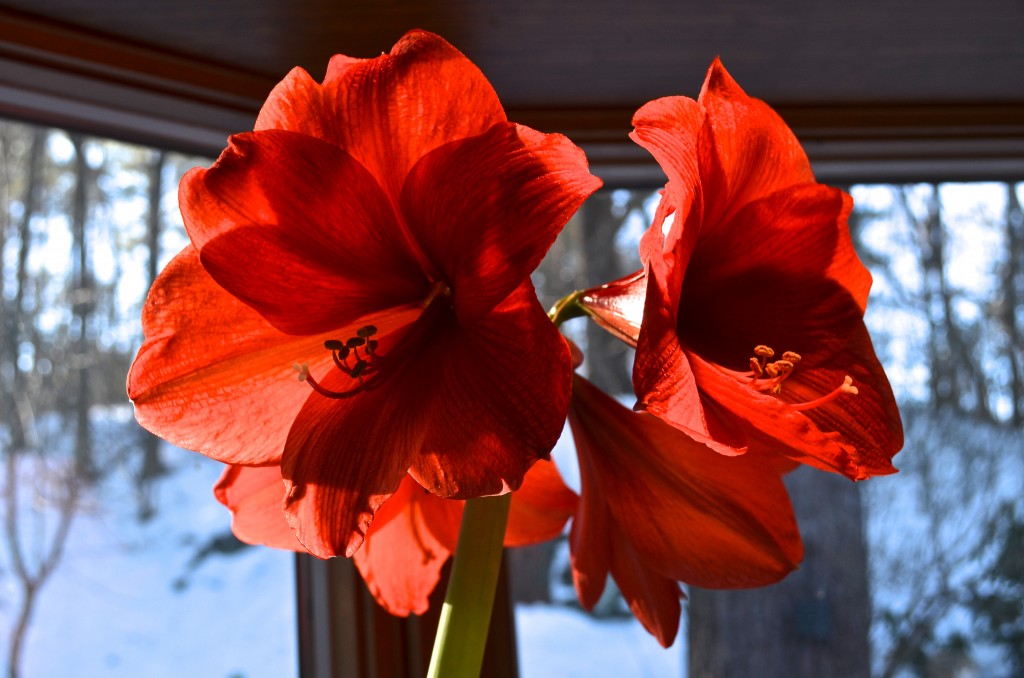 While we dream of spring, here is a giant tropical ignoring the snow outside the window. I notice on my calendar that in 2012, the spring peepers started singing on March 12, now almost two weeks past. That was an eerily warm winter. This blizzardy year, they’re still asleep under the ice.
While we dream of spring, here is a giant tropical ignoring the snow outside the window. I notice on my calendar that in 2012, the spring peepers started singing on March 12, now almost two weeks past. That was an eerily warm winter. This blizzardy year, they’re still asleep under the ice.
Amaryllis (Hippeastrum x hybridum)